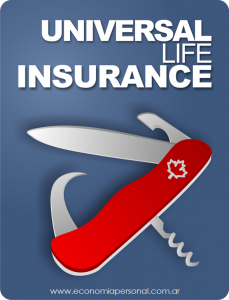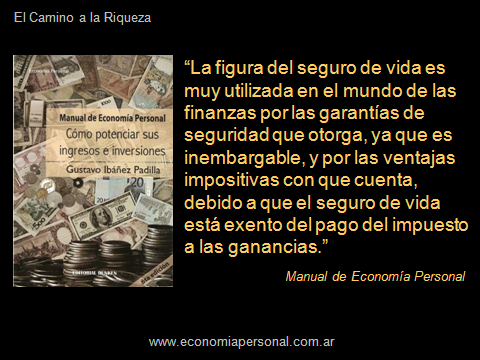Americans to Protect Family Security
marzo 27, 2014
Secure Family
Americans to Protect Family Security is a partnership of America’s life insurance companies, agents, and financial advisors that is dedicated to educating policymakers about the role our products play in the financial lives of 75 million American families.
These families turn to life insurance companies and trusted agents and advisors to protect their financial futures with life insurance, annuities, long-term care, and disability income insurance.
The Coalition includes the American Council of Life Insurers (ACLI), Association for Advanced Life Underwriting (AALU), GAMA International, Insured Retirement Institute (IRI), National Association for Fixed Annuities (NAFA), National Association of Independent Life Brokerage Agencies (NAILBA), and National Association of Insurance and Financial Advisors (NAIFA). Our goal is to highlight facts about our products and their importance to the financial and retirement security of American families.
To view personal stories about how life insurers’ products help families, businesses, and individuals, visit the LIFE Foundation at www.lifehappens.org.
– See more at: http://www.securefamily.org/about-us/#sthash.YYABJm49.dpuf
Families and businesses alike need financial stability and count on Life Insurers’ products for peace of mind, long-term savings, retirement planning, and guaranteed lifetime income.
Life insurance companies, agents, and financial advisors proudly serve 75 million American families as they prepare for a secure financial future. Life insurers’ products also provide stability and certainty to employers of all sizes—fueling economic growth.
• 75 million American families depend on life insurers’ products to protect their financial and retirement security.
• Almost 20 percent of Americans’ long-term savings is in life insurance and annuities.
• Life insurers pay out $1.5 billion to families and businesses every day.
• The life insurance industry generates approximately 2.5 million jobs in the U.S.
• Life insurers invest $5.2 trillion in the U.S. economy – 90 percent of the industry’s total assets.
• Life insurers are the largest single source of bond financing for American business, holding 17 percent of all U.S. corporate bonds.
Life Insurance – Products and Benefits American Families Count On
Whether protection against the financial risk of the sudden death of a loved one, outliving savings in retirement, lost income due to disability, or paying for long-term care, life insurance companies provide 75 million American families with financial protection and retirement security products.
In 2010, life insurance companies provided over $557 billion in payments, helping families guarantee their financial security – both now and in retirement.
Click on the tabs above or download our Life Insurance: Providing Financial Protection brochure (PDF) to learn more about the different products and benefits life insurers provide families every day.
– See more at: http://www.securefamily.org/our-products/#sthash.niXtPCso.dpuf
Annuities
Today, 75 million American families wisely use the savings incentive in retirement annuities and life insurance to ensure their families’ long-term financial security. Annuities help families establish solid financial plans for retirement by providing guaranteed income for life.
Americans are living longer than ever – many 20 to 30 years after retirement – and every year fewer are covered by traditional pensions that provide lifetime benefits. Managing and maximizing retirement savings can be a daunting task and annuities can alleviate financial uncertainty by providing steady cash flow to cover retirees’ day-to-day financial needs.
In these tumultuous financial times, encouraging Americans to make solid financial plans for retirement is more crucial than ever. Responsible retirement planning that includes retirement annuities gives retirees and their families’ peace of mind in the knowledge that their financial security is protected and that they can count on steady income for life.
Download our Annuities: Creating Guaranteed Income for Life (PDF) brochure to learn more.
Facts and Figures:
The only way to create a guaranteed lifetime income stream in retirement is through an annuity.
A 2011 survey shows that only 13 percent of American workers are very confident that they will have enough money to live comfortably throughout their retirement years, down from 27 percent in 2007.
20 percent of Americans’ long-term savings – one in every five dollars saved – are in annuities and permanent life insurance. In 2012, American families received $70 billion in annuity payments.
A survey by the Committee of Annuity Insurers shows that 79 percent of annuity owners say that annuities are a safe and secure way to save for retirement and that annuities make them feel secure in times of financial uncertainty.
– See more at: http://www.securefamily.org/retirement-annuities/#sthash.KwV1rVyY.dpuf
Retirement Savings Plans
American families rely on retirement savings plans – like 401(k)s and IRAs – to help them save for retirement and to ensure their families’ financial futures are secure.
Life insurance companies offer these retirement savings plans to employers and they are typically funded with contributions made by both employers and employees. These plans reward responsible saving with a special tax status that allows the funds to grow tax-free until they are withdrawn in retirement. Financial penalties for early withdrawal of funds before retirement ensures those savings are held for when they are most needed.
In search of revenue for the government, policymakers may curb the amount of tax-deferred funds that can be put into retirement plans. In doing this, the government would discourage American families from taking responsibility for their financial futures. Policymakers should be focused on ensuring our laws encourage a competitive marketplace of retirement plan products and, most importantly, support and reward financial responsibility.
For more information about retirement savings, visit the Coalition to Protect Retirement at www.howamericasaves.com.
– See more at: http://www.securefamily.org/retirement-savings/#sthash.d73TJ6ay.dpuf
——————————-
Join Americans to Protect Family Security—a coalition of companies, agents, and advisors—to show your support for the life insurance industry that helps protect the long-term financial security of American families, businesses, and the economy.
The current tax treatment of permanent life insurance encourages
individuals, families, and businesses to efficiently manage risk and
prepare for long-term financial needs, despite a general environment
that focuses more on the short-term. Americans are facing greater
hurdles than ever before when planning for financial security. Any
changes to public policy must encourage Americans to plan for their
financial futures.
Secure Family: Peace of Mind
“Ninguna otra inversión financiera puede hacer lo que hacen las compañías de seguro de vida. Ninguna otra industria respalda sus productos con reservas tan saneadas como las de la industria del seguro de vida. Un ejemplo concreto es el de la Gran Depresión de 1929: cuando la Bolsa de New York tocó fondo y muchos bancos quebraron, las compañías de seguros pudieron dar a sus asegurados una seguridad que no pudieron encontrar en otro lugar. Otras industrias quebraron, se perdieron fortunas de un día para el otro, se evaporó el ingreso de las propiedades y los bienes raíces. Pero no se conoció ninguna pérdida por el fracaso de alguna compañía de seguros de vida. Ningún asegurado perdió un centavo. El récord de fuerza y seguridad de las compañías de seguros de vida, aún bajo las condiciones más adversas, es un emblema de orgullo en la industria del seguro. Ninguna inversión u otro tipo de negocio, ha tenido un récord de seguridad superior al del seguro de vida” Life Underwriter Training Council
https://www.economiapersonal.com.ar/servicios/seguros-de-vida-y-planes-de-inversion/
Serving your clients with life insurance
marzo 12, 2014
Serving your clients with life insurance
By Jim Brogan
Ever since I began focusing on the retirement market in early 2003, my business focus has always been on increasing the assets I manage here at my firm, whether it be assets under management as a fee-based RIA or fixed and indexed annuities.
I had never done much life insurance until 2010. I recognized that there was a client need for life insurance, but I was not entirely sure how to serve that need. I therefore made a commitment to learn how to successfully implement life insurance into my current practice.
I believe that the most effective way to add life insurance to your practice is to work with your current clients. You should have a trust-building relationship with them, and they look to you for advice and direction. It is your job as their advisor to show them their potential risks, and how to solve those risks in their financial plan.
Two significant risks
Most of us are well aware of the risks of inflation and losing money in a bad market. However, most couples face two other significant risks to their lifestyles during retirement. One of those risks is the threat of needing long-term health care. The other is the threat of one spouse significantly outliving the other, and the income loss affecting the surviving spouse.
One of the best ways to address these two risks together is with life insurance. The insurance industry is moving more and more in the direction of providing long-term care benefits that are connected to life insurance, whether it’s an accelerated death benefit for long-term care needs, or an asset-based long-term care plan that leverages the death benefit into a much greater long-term care benefit. These benefits can provide our clients with tremendous protection against these two risks.
I also believe it is important to show clients that life insurance is an alternative asset class in their portfolio. While it may or may not be a cash asset, depending on the product chassis you use, it is a valuable insurance asset that can provide for long-term care and/or survivor needs. We should always be communicating life insurance as an alternative asset in their portfolio to help address these risks, and client reviews should include this insurance asset.
My experience has been an eye-opener. While I previously realized many of my clients do have a need for life insurance, the need is much more significant than I originally thought. Furthermore, when used properly, life insurance can provide a significant enhancement to the services you provide for your clients. When implemented successfully, it can help transform your business.
About the Author
Jim Brogan is president and founder of Brogan Financial in Knoxville, Tenn. He was named Senior Market Advisor’s 2011 Advisor of the Year.
Source: http://www.lifehealthpro.com/2012/09/20/serving-your-clients-with-life-insurance?t=life-sales-strategies September 20, 2012.

Do not Buy Term and Invest the Difference
julio 23, 2013
Don’t listen to Suze Orman’s «buy term and invest the difference»
By Jeffrey Berson
To most of us who understand the insurance world and the real choices available for our clients, the advice that Suze Orman gives is, at best, irritating and, at worse, negligent. It is virtually impossible for one piece of advice to be the answer for millions of people all at the same time.
In our world of financial decisions, each client is like a snowflake: No two are alike, and no set of circumstances is the same. In Suze’s world, everyone is the same and should just do what she says — black or white, no gray.
Recently while driving in my car, I was listening to a financial talk show. The caller said, «But Suze Orman says I should just buy term and invest the difference.» To his credit, the host asked the caller several questions to see if that strategy made sense for that individual. The whole exchange got me thinking: Why do so many people like Suze think that buying term and investing the difference is a good idea? And more importantly, why do they not understand the power of permanent life insurance the way we do?
In my experience, people who say they will «buy term and invest the difference» (BTID) rarely actually do so. Instead, they buy term and spend the difference. The truth is, people don’t always understand the savings element of the BTID idea. Initially, they may have had the thought of investing the difference, but typically, life gets in the way. This is where the BTID idea usually fails, leaving the client with no insurance and no investments.
But, for the sake of this article, let’s assume that our client does invest the difference and does stay true to the BTID idea. There are still several problems with the concept that Suze and her pals tend to brush over or minimize. Perhaps the biggest risk, other than the actual investment that the client might choose, is the insurability risk.
We often say that people are never more healthy than they are right now. This is true in a lot of cases, but what it points out is a possible risk that can happen in the BTID strategy. Insurability may be lost in between terms; in other words, a client must «re-qualify» for the new term policy each time the term period runs out. If they can’t qualify or if the new policy might be rated, then costs for the term can be significantly higher, or worse, the insurance could be lost.
Another problem that is often overlooked by the proponents of BTID is the investment risk. And within the investment risk, there is also another risk: the risk of the tax implications. One of the myths of the BTID strategy is that somehow, the investment will always grow and magically be there when you need it. Unfortunately — and recent history shows this — investments can be volatile and inconsistent, and there are no guarantees that the funds will be available and at their peak when you need them most. In addition, the tax implications of the investment are not often factored in when making the decision. With cash-rich life insurance, the tax advantages are simple. The cash value is tax-deferred (no taxes due on money as it grows), and the funds in a policy can often be accessed tax-free via policy loans.
The BTID idea needs to be flushed out for each individual and compared side-by-side to a permanent life solution to determine if it is a good idea for our clients. There are several software programs that do this well, and they can provide you with a valid comparison that can help your client make a good, informed decision. I wonder if Suze and her friends have ever done this type of analysis?
We are firm believers in the power of cash-rich life insurance as part of a long-term plan. But, and this is an important distinction, we would never say that it is right for everyone. Term insurance does have a place and can solve a specific need. But to simply eliminate the idea of permanent coverage as an option discounts the true value of a permanent plan. Financial gurus like Suze Orman who make blanket statements with no regard for the individual set of circumstances are short-sighted and irresponsible. So, stop! Don’t take Suze’s word for it. Investigate the permanent options on your next case. You may be surprised what you find out.
Source: PRODUCERSweb.com, June 24, 2013
I’ll Tell You Why People Should Buy From Life Insurance Brokers…
abril 5, 2013
As an independent life insurance broker I am asked quite often, “why should I buy from you? I can just buy life insurance online.” The answer is yes you could. But there is value to having an experienced independent insurance broker. First of all, our services are FREE. We are paid by the insurance carriers a commission. In most cases, we can find great products from A+ Rated insurance companies at a better price and value that what a consumer will find online. Why you may ask? There are several carriers that do not have huge marketing budgets because they only market through insurance brokers. Therefore, they do not have the big marketing budgets of some of the more well known insurance companies. Those savings reflect to cheaper premiums to the consumer.
An insurance broker is especially helpful if there are underwriting concerns. There are a lot of factors that can cause rate ups or even declines from buying life insurance. Some examples can be overweight, diabetes, high blood pressure, high cholesterol, prescription drug use, driving records and even occupations. The experienced life insurance broker can use case managers and underwriters to determine which product and insurance company to apply for. Thus avoiding an unnecessary decline, that can haunt you for years every time you try to purchase life insurance or health insurance. This will not be the case to the novice insurance consumer who unknowingly applies online not knowing the consequences of being declined for life insurance.
Let me tell you a story about a client I had recently. This is a story that illustrates the true value of an independent life insurance broker. I received a referral from a somewhat frantic and upset man we will call “John”. “John” had a big issue with his insurance company bank draft. It seems “John” purchased $1 million 10 year term life insurance 10 years ago online without the assistance of an insurance broker, because he felt he would get a better deal. “John” was 40 years old when he found his current policy. He was paying $80.01 per month with a very well known nationally recognized life insurance company. Which by the way, was about $15 per month too much, but I digress. It seems that somehow, the 10 years were up and “John” wasn’t paying attention until the life insurance company took out his new adjusted premium of $3,768 per month! Luckily, “John” was still healthy and qualified for another $1 million in life insurance that we needed to get issued a.s.a.p. as paying over $3,700 per month was not a feasible option. I hate to think what would have happened had “John” had a health issue. Had “John” used an insurance broker 10 years earlier, he would have had known with plenty of advance notice that was about to happen and avoided having to pay the exurbanite high premiums for two months. That is just one example of the value of an experienced independent life insurance broker who is on top of client needs.
“You can’t always get what you want, but if you try sometimes, you might find, you get what you need.”—Mick Jagger
Cash Value Life Insurance
septiembre 13, 2012
Cash Value Life Insurance
Seguro de Vida con Valor en efectivo: Es una póliza de Seguro de Vida que acumula valores en efectivo en una cuenta, además de pagar en caso de muerte del asegurado. También se lo conoce como Seguro de Vida con capitalización. Es un instrumento financiero que permite obtener Protección e Inversión simultáneamente. Su uso está muy difundido por ser la herramienta ideal para constituir la columna vertebral de todo Plan Financiero de Largo Plazo.
El capital, el interés y las ganancias acumuladas en la póliza no son gravables (no están alcanzadas por el impuesto a las ganancias), y puede ser utilizado como un fondo del cual pedir prestado y como un medio para pagar primas de las pólizas en caso de no desear continuar los aportes (primas). Existen diversos tipos: de vida entera, de vida variable y de vida universal (el más empleado por ser el más versátil), son todos los tipos de seguro de vida con valor en efectivo. También conocido como seguro de vida permanente, ya que proporciona cobertura para toda la vida del asegurado, mientras que las pólizas de vida a término son por un plazo en vigor durante un período especificado.
Más información:
https://www.economiapersonal.com.ar/servicios/seguros-de-vida-y-planes-de-inversion/
Cash Value Life Insurance: A type of policy that accumulates value during the policyholder’s lifetime and pays out upon the policyholder’s death. The interest and earnings on the policy are not taxable, and it can be used as a fund from which to borrow and as a means to pay policy premiums later in life. Whole life, variable life and universal life are all types of cash value life insurance. Also known as permanent life insurance because it provides coverage for the policyholder’s entire life, while term life is only in force for a specified period.
———————————————
Cash Value Life Insurance: A Great Investment
Cash value life insurance has come atop the many life insurances available. The popularity of this insurance started because it is considered a great investment by those who have benefited from the deal. Its introduction has yield best results with all the rightful comments and testimonies coming from satisfied customers
It works in many ways as a great investment for both the beneficiary and the policy holder?s delight.Should the policy holder pass away, there is sure money waiting for the beneficiary. It is like building up an investment to be used in the future.
Though the holder passes away, there is still money which can be used by the beneficiary to pay for sudden fees. In some insurance policies, you can even garner money which you can use intently for the purpose of education. The sure credit is at hand.
It is considered a great investment too because you can make use of the money investment if you want to. Loans using this insurance are possible. You just have to be mindful that these insurance usually permits the insurance company to take amounts that if saved can be of great help to your beneficiary.
The more you depend on credit loans, the lesser the benefits that your family will get in the future. Should you choose to get all the money and forfeit the policy, you can do so at any time. Now, the investment becomes like a savings plan that you can just withdraw. You have the access of your money just when you needed it.
In these ways, cash value life insurance is considered a great way to invest. As money is involved, you are also sure to get a lump sum on the interests that your money has accumulated during the times when you have been saving.
Source: http://cash-value-lifeinsurance.blog.com.es/
Six famous brands started or saved by Life Insurance
septiembre 12, 2012
Six famous brands started or saved by Life Insurance
By Brian Anderson
If not for life insurance, Disneyland might have existed only in Walt’s imagination. Stanford University might have been a short-lived tribute to a son who died young. James Cash Penney’s personal depression during the Great Depression might have shuttered the J.C. Penney chain. McDonald’s might have only served a few hundred thousand. Today’s home chefs might not be getting pampered.
Check out this slide show to learn how life insurance played a key role in either the creation or survival of some iconic American institutions.
Disneyland
Walt Disney Studio was founded in 1923 in Los Angeles by Walt Disney (1901-1966) and his brother Roy. After a distributor essentially stole one of his early cartoon characters and his animators, Walt made sure he owned everything he made after that. Mickey Mouse debuted in 1928 and became an immediate sensation as the star of the first cartoon with synchronized sound.
His animated features and, eventually, television programs achieved steady success, and by the 1950s, Walt became intrigued with creating an amusement park where parents and children could have a good time together. At the time, the only amusement parks in the country were dilapidated places with seedy characters, but Disney dreamed of an immaculately clean, family oriented park with imaginative attractions.
After failing in the pursuit of traditional means of financing to build what would become Disneyland, Walt decided to provide his own financing. A large part of this came to be by collaterally borrowing money from his cash value life insurance. Disneyland opened in 1955 and hosted more than 3.5 million visitors in its first year. It became an immediate, resounding success.
Disney is quoted as saying that money was the biggest problem he faced throughout his life, and that was certainly the case with Disneyland. “It takes a lot of money to make these dreams come true. From the very start it was a problem. Getting the money to open Disneyland. About $17 million it took. And we had everything mortgaged, including my personal insurance… We did it (Disneyland), in the knowledge that most of the people I talked to thought it would be a financial disaster — closed and forgotten within the first year.”
McDonald’s
Working as a milkshake machine distributor in 1954, Ray Kroc (1902-1984) took notice of a successful hamburger stand in San Bernardino, Calif., which he called on, intending to sell brothers Dick and Mac McDonald more Multimixers. He learned they were interested in a nationwide franchising agent. Kroc, 52 at the time, decided his future was in hamburgers and partnered with the brothers. He opened his first McDonald’s in Des Plaines, Ill., in 1955 and bought out the McDonald brothers in 1961.
Kroc did not take a salary during his first 8 years, and to overcome constant cash-flow problems, Kroc borrowed money from two cash value life insurance policies (and also his bank) to help cover the salaries of key employees. He also used some of the money to create an advertising campaign around emerging mascot Ronald McDonald.
Using a progressive franchising arrangement and striving for consistency and standardization throughout the chain, McDonald’s grew to more than 700 restaurants within 10 years. Today, McDonald’s serves more than 50 million people each day through more than 30,000 locations in 119 countries.
Stanford University
Pacific Mutual Life (now Pacific Life) ceremoniously issued its first policy to Leland Stanford, the company’s first president, in 1868. After his son, Leland Jr., died of Typhoid Fever in 1884 at the age of 15, the former California governor and U.S. senator and his wife, Jane L. Stanford, determined that because they could no longer do anything for their own child, they would use their wealth to do something for other people’s children. With a strong belief in the importance of a practical education for men and women that would prepare them to be productive and successful, six years of planning led them to establish Leland Stanford Jr. University in Palo Alto in 1891, with a pioneer class of 555 students (including Herbert Hoover).
Following Leland’s death in 1893, the fledgling university’s financial support became uncertain, to the point where Jane tried unsuccessfully to sell her treasured jewel collection in 1897. Intent on preserving the university and avoiding a “temporary” closure, she used her husband’s life insurance policy proceeds to help fund operations and pay faculty, allowing Stanford University to weather a dangerous six-year period of financial distress.
J.C. Penney
In 1898, James Cash Penney was working in a Golden Rule Store, part of a small chain of dry goods stores. He was such an enterprising worker that the pair of owners took him under their wing, offering him a one-third partnership in a new store they were opening in Kemmerer, Wyo. Penney participated in opening two more stores, and when the original partners dissolved their partnership in 1907, Penney purchased full interest in all three stores. By 1912, he operated 34 stores throughout the Rocky Mountain region. In 1913, he moved the company to Salt Lake City and incorporated it as the J.C. Penney Company. By 1929, there were 1,400 stores across the country.
The stock market crash of 1929 and the ensuing Great Depression devastated the stores and Penney’s personal wealth. The financial setbacks also took a toll on his health — physical and mental — but he was able to borrow against his cash value life insurance policies to help the company meet its payroll and day-to-day expenses. This allowed the company to stay afloat and eventually rebound.
Penney became a born-again Christian and remained as chairman of the company’s board until 1946. He served as honorary chairman until his death in 1971. Today, the company’s 1,100 stores take in revenues of $18 billion a year, and the company was able to pay new CEO Ronald Johnson, the former Apple exec who joined the company last November, $53.3 million in 2011.
The Pampered Chef
Using $3,000 she borrowed from a life insurance policy, home economist Doris Christopher started The Pampered Chef in her suburban Chicago home in 1980.
All her time working with homemakers convinced Christopher that women needed quality timesaving tools designed to help make cooking quick and easy. She had seen the success of Tupperware’s business model and developed her own detailed multi-level marketing business plan. Using the life insurance money, she purchased some basic inventory and was on her way.
By 2002, the company had grown into a $700 million operation that was acquired by Warren Buffett’s Berkshire Hathaway Corporation for $1.5 billion. Today, the company boasts 12 million customers.
Foster Farms
In 1939, a young couple named Max and Verda Foster started Foster Farms by borrowing $1,000 against a life insurance policy. They invested in an 80-acre farm near Modesto, Calif., and began raising turkeys and, eventually, chickens.
By the 1960s, the company had outgrown the original farm and moved its corporate headquarters to the small California Central Valley town of Livingston, where it still resides. Today Max and Verda’s grandson, Ron Foster, is the CEO of the family run business. Foster Farms is now more than 10,000 employees strong, with operations in California, Oregon, Washington, Colorado, Arkansas and Alabama, and has a line of products that are sold globally.
Foster Farms specializes in fresh, all-natural chicken products free of preservatives, additives or injected sodium enhancers.
Fuente: http://www.lifehealthpro.com/2012/04/06/6-famous-brands-started-or-saved-by-life-insurance
Whole Life Policies: Tapping Cash Value as Alternative to Equity Investing
julio 26, 2012
Whole Life Policies: Tapping Cash Value as Alternative to Equity Investing
By William H. Byrnes, Esq., Robert Bloink, Esq., LL.M.
Whole life insurance policies have taken the spotlight as investors seek secure investment alternatives to today’s rocky equity markets. Not only do these policies provide for tax-deferred growth, but they come with many of the guarantees sought by clients today.
The market for these policies is soaring, as clients see them as vehicles allowing for a return on their investment in the life insurance contract without the risks inherent to investing in the open markets. An advisor’s guidance can be critical in determining whether a whole life policy is a smart investment for any given client and can also provide invaluable in navigating the often-complex rules governing the tax treatment of these policies.
The resurgence of whole life insurance
The stock market losses sustained by your clients in the past few years have them scrambling for alternative investment avenues. They simply are not willing to continue to risk their savings in what is often perceived as a volatile (and hostile) investing environment. A whole life insurance policy may provide a safe long-term investment because the investment in the contract grows tax-deferred and often at a guaranteed rate regardless of how the stock markets are performing.
At its most basic level, a whole life insurance policy requires that an investor pay a level premium each year and provides for a guaranteed death benefit on the death of the insured. However, these policies also contain an investment component. A portion of the premiums paid is invested by the company issuing the policy, building cash value in the policy that the insured can borrow against.
Further, many of these policies pay an annual dividend, which is sometimes set at a guaranteed rate over the life of the policy and can be as high as 6% per year. These guaranteed dividends make whole life policies attractive for many investors looking for an income stream from their investments.
It is important to note that a whole life policy is a long-term investment — it may be necessary to pay premiums over a period of 15 to 20 years in order to realize a decent return on the investment.
Accessing the cash value of the policy: Tax implications
The advice of a financial advisor is critical in determining if and when withdrawing against the cash value of the policy is a smart choice. In general, the policyholder can borrow against the accumulated cash value without paying taxes or interest on the amount withdrawn. Of course, there are exceptions and consequences that must be considered when making these withdrawals.
Any withdrawals that are not repaid before the insured’s death will reduce the death benefit payable on the policy, so if the policy is purchased primarily to provide for the policyholder’s beneficiaries, withdrawals may not always be appropriate.
Despite the general rule, withdrawals are sometimes taxable. For example, if the withdrawal is made during the first 15 years of the policy’s existence and reduces the death benefit payable, the amount may have to be included in gross income. Any withdrawal that exceeds the taxpayer’s basis in the policy will be subject to income taxation.
In some cases, if the withdrawal is for more than the policy’s cash surrender value, the insurer can increase the premiums required to maintain the same death benefit under the policy. A substantial increase could cause the policyholder to have trouble meeting premium payments, in which case the policy would lapse and the investment could be lost.
Conclusion
For those clients who continue to shy away from equity investing, a whole life insurance policy can provide a viable alternative by offering guaranteed dividends and tax-deferred growth. It is, of course, important to examine each client’s financial position to determine whether the long-term investment required in the way of annual premiums is the best option in any given situation.
Source: LlifeHealthPRO, 18/07/12.
——————————
About the Author
William H. Byrnes, Esq.
Prof. William H. Byrnes, Esq., LL.M., CWM, Fellow
Prof. William H. Byrnes, Esq., LL.M., CWM, Fellow, is the leader of Summit Business Media’s Financial Advisory Publications, having been appointed July 1, 2010. He has been an author and editor of ten books and treatises and seventeen chapters for Lexis-Nexis, Wolters Kluwer, Thomson-Reuters, Oxford University Press, Edward Elgar, and Wilmington, as well as numerous commissioned, peer-reviewed, and law review articles. He was a Senior Manager, then Associate Director of international tax for Coopers and Lybrand, which subsequently amalgamated into PricewaterhouseCoopers, practicing in Africa, Europe, Asia, and the Caribbean.
He has been commissioned and consulted by a number of governments on their tax and fiscal policy from policy formation to regime impact. He has served as an operational board member for companies in several industries including fashion, durable medical equipment, office furniture, and technology. Since 1994, he has been a professional trainer for professional association conferences, government workshops, and financial service institutions in-house meetings.
Before Associate Dean Byrnes joined the administration of Thomas Jefferson School of Law, he was a tenured law faculty member at St. Thomas School of Law. He serves on the Academic Committee of the American Academy of Financial Management. He created the first online graduate program offered to wealth managers and life insurance producers without any legal background—see http://llmprogram.tjsl.edu (Graduate Program of International Tax and Financial Services, Thomas Jefferson School of Law).
——————————————————————————————————————————
Whole Life Insurance
Whole Life Insurance is a permanent form of life insurance that will provide a lifetime of protection with a level premium. Depending on the policy that you purchase, a whole life insurance policy can also act as a tax-efficient investment with strong cash values. Whole Life Insurance spreads the cost of your coverage over the lifetime of the policy, which keeps premiums lower than they would otherwise be. Additionally, there is an option to purchase certain Whole Life policies over the course of 10 or 20 years and spend the rest of your life protected.
Tax-Advantaged Investing Using Whole Life Insurance
One of the major features of both Whole Life and Universal Life insurance policies is the idea of having an investment inside the policy that is efficient when it comes to taxes. Whole life insurance in particular can accumulate a so-called cash value on top of its normal cost of insurance. This cash value is an investment component that gains interest at a rate determined by long-term financial projections.
The advantages of using a whole life insurance policy as an investment are many. Whole life insurance offers a very stable long-term investment. While it may not respond as quickly to short-term changes in the marketplace, whole-life insurance is very useful for meeting long-term financial goals because of its stable, guaranteed rate of return. The tax-advantaged aspect of a whole life insurance policy allows you to gain interest on funds you would normally be paying tax on. This allows you to grow your investments more efficiently.
Paying For Whole Life Insurance in 10 to 20 Years or Before Retirement
Basic Whole Life policies spread the payment for insurance over the estimated length of your life. This means that you’ll be paying your premiums even while retired. But as was touched on previously, there are some options when it comes to paying out the entirety of your policy earlier, while you have greater earning potential. The most common options are 10 and 20 year plans, as well as paying until the age of 65. In all cases, these payment plans spread insurance payments out over a smaller amount of time. Ultimately, the shorter the length of time, the higher the premiums, but the positive aspect of this is being done paying for your insurance coverage earlier.
Whole Life Insurance is a very stable, tax-efficient investment tool, as well as an excellent permanent life insurance policy. Whole Life Insurance can fit cleanly into your financial plan, but for obvious reasons the issues of balancing your investments, maintaining a lifestyle and planning for the future are as complex as ever. Because of this, we highly recommend talking with a financial advisor before you buy into a whole life insurance policy, or do any major financial planning.
It Can Happen to You
marzo 20, 2012
It Can Happen to You
By Jeff Rose
It’s one of those things that you think will never happen to you.
To walk into the kitchen and find the love of your life lying lifeless on the floor; dead on the cold kitchen tile.
It’s been over three years since I heard this story. A fresh widow sitting in my office clenching the box of tissues that I offered her, sharing her sad story with me.
She had been married to her husband for more than 20 years. They had two wonderful kids and loved spending each day with each other.
The Family Man
The husband was a hard worker. He loved his family and gave each day his all. He had no preexisting conditions. As a doctor himself, he was very conscious of his health and took care of himself.
Stories like this happen more often than we want to believe. You see it in the news, you see it in blogs, you even hear about it on Oprah.
Some of us are lucky. We never have to experience the heartache of losing a loved one before it was time for them to go. I can only imagine how hard it is for someone to go through that. And there is no hiding the pain that I saw in her eyes. But as I mentioned, the husband loved his wife and loved his family and made sure that they were protected.
He did this by taking out a very large life insurance policy.
Having to deal with the pain of losing her husband was hard enough. If she would have had to worry about where her next paycheck was going to come from now that her husband, who was the clear breadwinner of the two, was gone, I think it would have broken her. Thankfully, she didn’t have to worry.
She didn’t have to worry at all.
The husband had realized how inexpensive term life insurance was and bought a lot of it. With the amount of life insurance that her husband had thoughtfully taken out on himself, she and the kids were set.
She wouldn’t have to work again.
Her kids could continue to go to the colleges that they wanted. The family, even without their dad and husband, would be okay financially.
It’s been three years since that unfortunate day, and having a review meeting with that client, she reinforced how thankful she was that her husband had had the foresight to buy the life insurance. She sat in my office and said, “Had he not bought that [life insurance], I have no idea what I would have done.”
So many people don’t feel the need to buy life insurance. In fact, over one-third of the U.S. population has no life insurance in their households whatsoever.
Life insurance is cheap. Life insurance is easy; it literally takes you less than 10 minutes to get a quote. I know because I did it myself. And if you haven’t, you need to.
Don’t you want to leave your loved ones with the financial means to continue without worry if you should leave them before you expect to go?
What are you waiting for?
This is a guest post by Jeff Rose, a Certified Financial Planner and Iraqi combat veteran. He blogs at Good Financial Cents, Soldier of Finance and Life Insurance By Jeff.
Fuente: The LIFE Foundation, 03/08/12.
Más información en: www.lifehappens.org
















